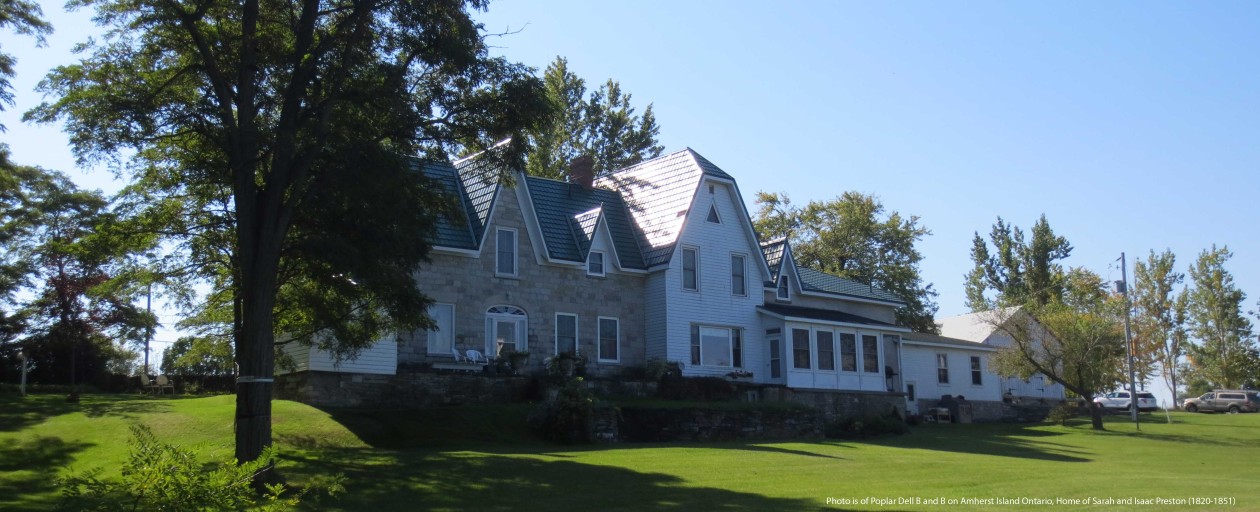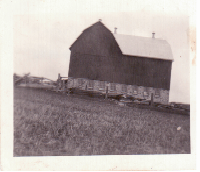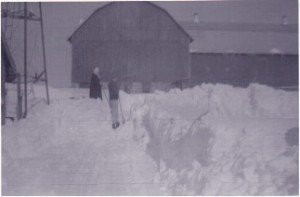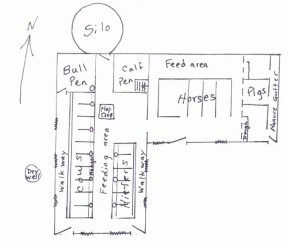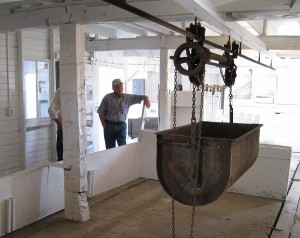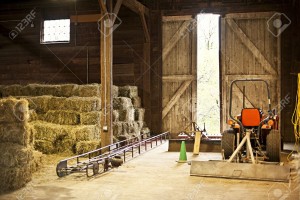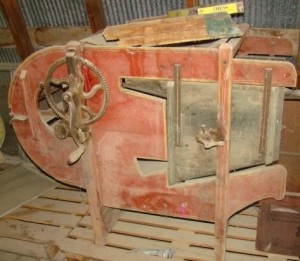As a kid, the barn was an awesome place to explore. So many hiding places, so many cool things not found at my house.
The new barn in 1932 (distorted photo), Carl and Sylvia Preston shoveling a path – 1960
The Stable
Drawing credit – Joy Seymour
The barn was designed for cattle and horses. The cattle I recall were a milking herd of twelve to fourteen Holsteins. The feeding manger held hay, corn silage or milled grain with vitamins added. The manger also had water bowls for each of two cows. Vacuum lines above the cows allowed for suction to the milking machines.
There was no bull in my memory, maybe my grandfather had adopted artificial insemination. (The Seymour farm nearby, had a bull, a monster to a small boy, angry red eyes, ring in nose and pushed on his cage when you were close – scary). Calves I enjoyed, having them suck my fingers, patting the little ones on wobbly legs. The cows too had personalities. One gentle one, enjoyed a pat on the forehead. Others were disinterested. Some ornery.
Don’t step into the gutter! Cows are messy. The barn had a dump bucket on a track, which my grandfather would shovel into from the gutter. The bucket would then be dumped into a large barnyard manure pile.
As a child with horses long gone, the horse pen had heifers, pigs, neighbour’s cattle and nothing at various times. A few pig pens were also located along the east wall. A farm in the 30’s was self-sufficient as far as food production for a family. Pork and chickens headed for the table.
The concrete silo, held corn silage, that sweet fermented feed, which blown in by a power blower and was removed out of ports accessed by a ladder from the outer wall of the silo.
Upper barn
The floor of the barn was sufficiently strong to carry the weight of hay stacked floor to ceiling (about 40”?) and fully loaded farm equipment. I recall the creaking of beams and floor boards when the tractor pulled a wagon of hay into the barn and wondering if the tractor with me and my grandfather would fall through. Straw for bedding the same floor to ceiling. A granary held bins of oats or other grains for feeding the cattle. Old grain cleaning mills were of interest to me, figuring out how they work. Hay removal in winter meant climbing to the top of the mow, dropping bales to the floor, then dropping them through a hatch in the floor to the stable below.
Post and beam constructed hay mow
Antique seed cleaning mill
